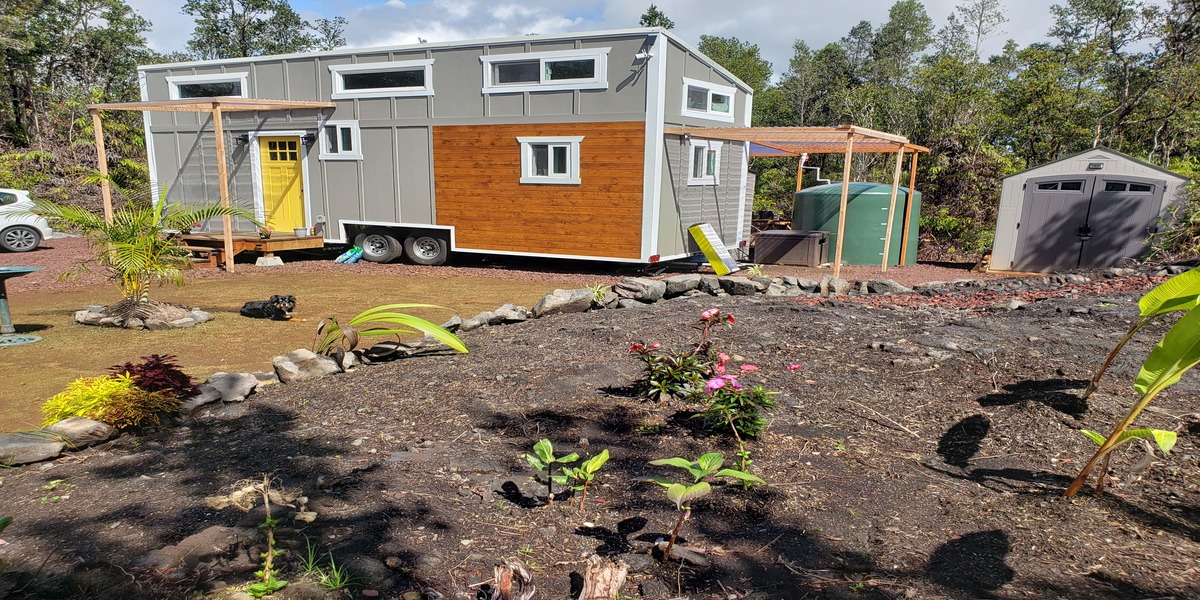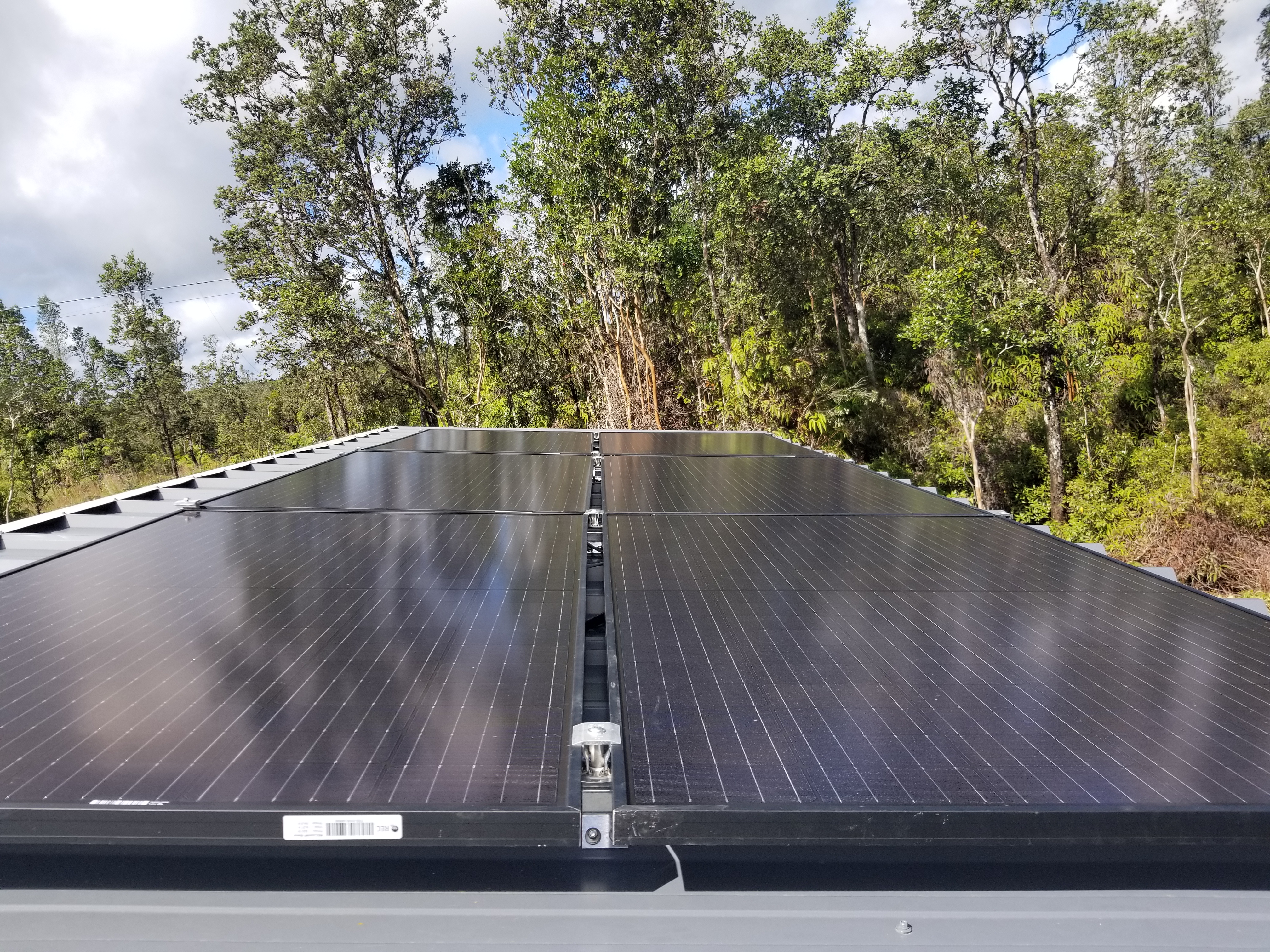A Tiny Home Experience In Hawaii - The 4 Hurdles

Knowledge Ridge Expert Stephen Goss shares lessons from building and living in tiny homes near Hawaii’s Kilauea volcano. He highlights key challenges—space limits, climate, energy storage, and cost—showing why off-grid living offers freedom but remains difficult to scale affordably.
During the 2020 pandemic in the cold winter of Michigan, my family and I felt compelled to embark on a new adventure. The requirement to stay indoors and prevailing discussions of the day motivated us to relocate to Hawaii boldly. We acquired a piece of land 20 minutes away from the magnificent Kilauea volcano.
After a few months, we obtained a tiny showroom home and began our journey. Having spent a year and a half residing in a small home and eventually constructing five others for different individuals, I am compelled to share the invaluable insights I have gained from this experience.
While many people often extol the positive aspects of tiny home living, I would like to shed light on four significant reasons that have impeded the widespread adoption of the tiny home and off-grid lifestyle. These challenges encompass the limitations of space, climatic considerations, the desire for exploration, and the cost of construction, which includes energy and water solutions.
Limited Space in Tiny Homes
In many developing countries, a tiny home with amenities such as a full-size refrigerator, stove, oven, washer, dryer, dishwasher, and a luxurious shower would be a dream. However, in the developed world, the expectation is to have all these comforts while also having ample space. Tiny homes are designed to be off-grid, which means there are limitations on the energy-consuming items that can be accommodated.
It is impossible to replicate everything found in a 1,200-square-foot apartment within the constraints of a tiny home. Scaling down the energy system to match the cost of renting or constructing a new home often renders the tiny home option less feasible.
Furthermore, mobility within a tiny home can be restrictive. To fully enjoy living in a tiny home, one must reside in a climate like Hawaii, characterized by stable and pleasant weather year-round. Nobody wants to be confined inside a diminutive enclosure during scorching temperatures exceeding 100 degrees or cold below 40 degrees. Considering the climate's impact on a tiny home's habitability is crucial.
Additionally, individuals must be mindful of the potential development of "Island fever" when residing in a tiny home. The desire to explore and venture beyond the couch to an office out of sight of a family member is limited, potentially leading to a sense of confinement.
Energy Storage
Contrary to popular belief, the primary concern when going off-grid is energy storage, not solar or wind energy generation. While both solar and wind technologies can be harnessed for energy, having an efficient storage solution is crucial.
In my case, I appropriately sized my solar array for my system, incurring an approximate cost of $7,000. I opted for an outback system with battery backup. The expense of the system varied significantly based on the type of batteries chosen.
Investing in a battery backup solution made sense in Hawaii, where energy costs rank among the top five in the United States. Over ten years, my system provided approximately two years' worth of energy savings compared to relying solely on the local utility provider. However, it is essential to note that I could install and maintain the system myself.

Considering the cost of professional assistance would likely render the energy consumption cost comparable to that of the local utility company making off-grid a solution of independence rather than improving one's carbon footprint.
Water
Water scarcity is a worldwide concern, and finding sustainable solutions is vital. My family and I were fortunate enough to live in an area just 20 minutes away from the rainiest city in the US, averaging 211 days of yearly rainfall.
To address our water needs, I installed a catchment tank and extended our lanai around the tiny home to maximize water collection from the roof. Additionally, I implemented a filtration system on the exterior of the home and a five-stage reverse osmosis system inside, providing my family with some of the most exquisite-tasting water we have ever experienced. However, it is crucial to recognize that such favorable conditions are unique; not only does it rain incessantly in this location to fill the catchment regularly, but there is also ample sunshine to recharge the solar panels. Few places in the US possess all these exceptional qualities. Alternative water solutions, such as wells or water delivery services, entail additional expenses impacting the cost of off grid living.
Cost of Construction and Other Factors
The final hurdle to consider regarding tiny homes is the construction cost. The average price per square foot can be exorbitant unless you possess the necessary skills to build the home. A typical tiny home, including labor, averages around $90,000. This figure does not encompass expenses associated with solar panels, water solutions, land acquisition, or home transportation to the desired location.
The average size of a tiny home is 10' x 30', equating to 300 square feet of living space, resulting in an approximate cost of $300 per square foot. In contrast, as of April 2023, the Federal Reserve reported a median cost of $222 per square foot for traditional homes.
Conclusion
Despite the aforementioned challenges, residing in Hawaii in a tiny home was an incredibly exhilarating adventure for my family and me. The memories and bonds forged during that time will forever hold a special place in our hearts.
While there are numerous positive and negative stories that I would love to share in this article, I must conclude for now. The insights provided offer a valuable perspective and inspire innovative solutions as we embark on this transformative journey of reshaping our way of life.
This article was contributed by our expert Stephen Goss
Frequently Asked Questions Answered by Stephen Goss
1. What are the unique marketing and sales strategies that sales professionals can employ to target the specific audience interested in adopting tiny homes?
Instagram and social media apps showing the entire process of purchasing tiny homes and using the off-grid systems have proven efficient in selling. Another is having a show model for people to play with and see the cool features has also led to sales. The interest generated by these two principles provided many serious buyers.
2. How can sales and IT business management professionals leverage their expertise to promote and implement energy solutions for off-grid living?
Bring technology to the home. USB outlets, Wireless phone charging stations also pop up with plugs enabling them to be hidden and used when the phone is charging.
Using raspberry pi to control the water, solar, lights, cameras, and motion sensors from a single app. Using led technology to promote a more comfortable and changing lifestyle in a tiny home.
3. What role can sales and IT business management professionals play in providing ongoing education and support to customers regarding sustainable living practices in off-grid environments?
Promoting technology for devices and support for the ever-changing smart devices put into a home. It has been my experience that people are willing to spend more money on small smart devices such as coffee makers, dishwashers, washers/dryers, led fireplaces, lighting, and much more that IT could package and take a central role in providing packages and solutions for small living spaces. All are connected to the internet.
4. What are the potential challenges and opportunities in the sales and implementation of energy solutions for off-grid living, and how can they be addressed?
Challenges are space and battery backups. The solution is to be on the front edge of providing a battery backup solution that is easy and simple for off-grid living to implement. There are now some great strides being made, and the technology to incorporate the software for them at the control of a phone app is exciting but needs more work.
Comments
No comments yet. Be the first to comment!
